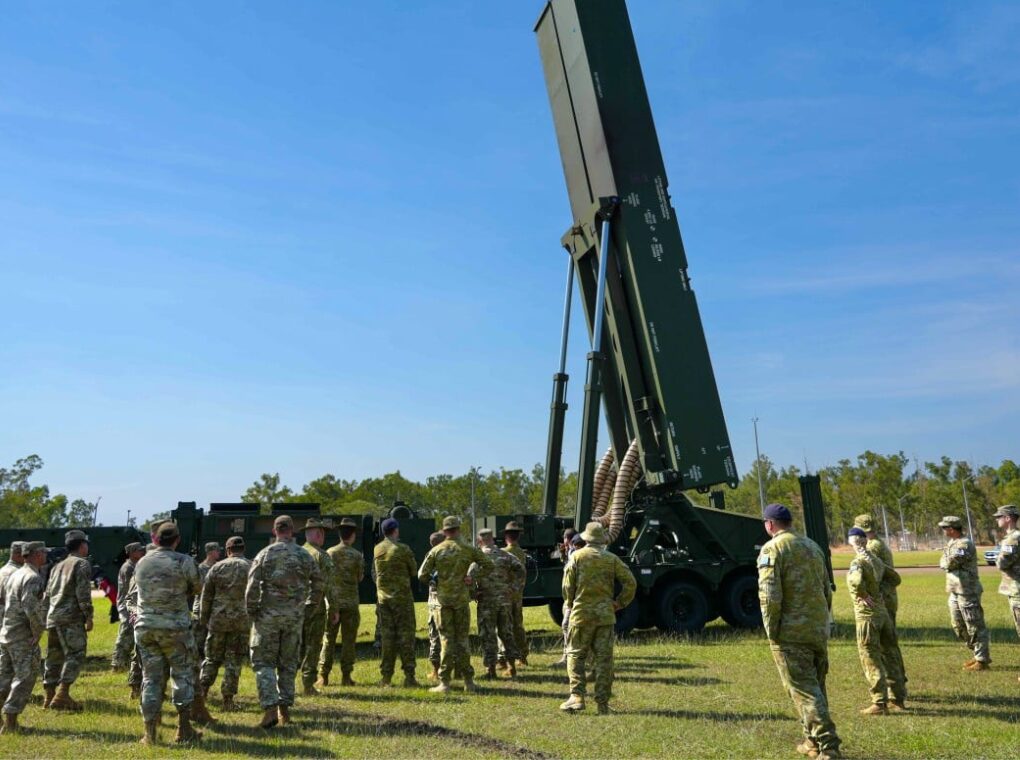The United States has deployed its Long-Range Hypersonic Weapon (LRHW), known as Dark Eagle, to northern Australia as part of the Talisman Sabre 2025 military exercise, marking a significant escalation in its Indo-Pacific military presence and drawing sharp criticism from Chinese experts who warn it may further fuel regional tensions.
This deployment represents the first time Dark Eagle has been positioned beyond the continental US, signaling Washington’s commitment to bolstering allied deterrence capabilities in the Asia-Pacific.
The hypersonic missile system, capable of traveling at speeds exceeding 6,100 km/h (3,800 mph) and striking targets more than 2,700 km (1,700 miles) away, was transported to Australia’s Northern Territory by the US Army’s Hawaii-based 3rd Multi-Domain Task Force.
“The deployment of the LRHW system to Australia is a major milestone for the army and demonstrates our ability to rapidly deploy and operate advanced capabilities in support of our allies and partners,” said Major General Wade Germann.
The move, however, is viewed by Chinese analysts as a direct signal to Beijing. According to Xin Qiang, deputy director of the Centre for American Studies at Fudan University, the deployment illustrates Washington’s intent to reinforce its alliance with Canberra and demonstrate military strength in the region.
“I’m afraid that is also the main intention of the US – to exert a certain deterrence against China, to demonstrate the unity and interoperability of its alliances,” Xin noted.
Australia’s Strategic Position
Experts like Chen Hong, director of the Australian Studies Centre at East China Normal University, argue that Australia is increasingly being shaped into a critical military hub under the US Indo-Pacific strategy.
With the deployment of the LRHW, Chen believes the US is gradually building Australia’s long-range strike capabilities, potentially turning the nation into a launch platform for future military operations in the region.
“Australia has not only already been a tool of the US Indo-Pacific strategy, but is increasingly becoming both a strategic and tactical weapon for Washington across multiple aspects,” Chen warned.
Chinese Concerns and Strategic Response
Despite the symbolic weight of the LRHW’s presence in the Talisman Sabre drill, several Chinese analysts downplayed the immediate threat to China, noting their own hypersonic missile capabilities. Retired PLA colonel Zhou Bo, now a senior fellow at Tsinghua University, highlighted that China’s DF-17 and DF-27 hypersonic systems already match or exceed the capabilities of Dark Eagle.
“In terms of weapons comparison, it’s not a case of them having something we don’t. What we have may even be better than theirs,” Zhou asserted.
He further emphasized that the current deployment does not necessarily imply permanent stationing in Australia, a decision that remains politically and diplomatically sensitive for Canberra.
Fu Qianshao, a former Chinese air force analyst, echoed the sentiment, suggesting that even if Dark Eagle were to pose a threat, China has the necessary countermeasures in place.
“Even if it were to pose a threat, we have corresponding countermeasures,” Fu said.
Strained China-Australia Relations
While the military cooperation between the US and Australia deepens, tensions between Beijing and Canberra have also been on the rise. China’s live-fire naval drills in the Tasman Sea earlier this year prompted sharp protests from Australia, while Canberra continues to increase its patrols and presence in the South China Sea. The United States, meanwhile, is pressing its allies, including Australia and Japan, to take clearer positions on potential conflicts involving Taiwan.
Chen warned of a growing divide between Australia’s diplomatic overtures toward China and its hardening military posture.
“What makes us alert and concerned is that there seems to be an increasingly evident rift or divergence between Canberra’s diplomatic and military spheres,” Chen said.
He cautioned that if Prime Minister Anthony Albanese’s government yields to pressure from Washington and domestic China hawks, the recent progress in China-Australia relations could be at serious risk.
“If the Albanese government succumbs to pressure and political inducements from the US military and Australia’s domestic China hawks, the hard-won progress in China-Australia bilateral relations could be damaged, or even lost entirely,” Chen said.
Rising Regional Competition
The inclusion of hypersonic weapons in multinational military exercises like Talisman Sabre underscores the intensifying strategic competition in the Indo-Pacific. While the US aims to demonstrate alliance strength and deterrent capability, China is watching closely and preparing its own responses.
As both powers expand their military footprints and technological capabilities, the risk of miscalculation in the region grows.
With more than 40,000 troops from 19 countries participating in Talisman Sabre 2025, including heavyweights like the US and Australia, the stage appears set for an increasingly militarized regional dynamic—one that observers warn could push China and the West into deeper strategic confrontation.
